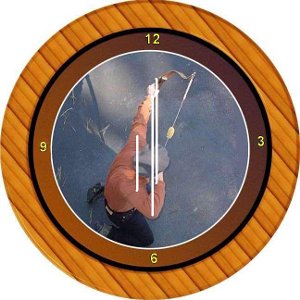I'm working to bare shaft two Gold Tip styles, the some older GT XX400XX with 75 grain tip inserts and GT Traditional XT 400 with 15 grain tip inserts. Starting long and cutting 1/4" at a time helped the side to side variations tremendously, especially when installing the 250 grain field points rather than the 150 grain tips, but no matter what I do these arrows nock kick high every time. Yes, Yes, Yes I have played the string nock point like a fiddle from dead flat up to nearly an 1.5" high than the shelf. No improvement whatsoever. This is with a 50# one piece 64" recurve. The last 1/4" cut off now shows the arrows a bit stiff, hitting to the left. But the high nock kick up has been throughout the whole spectrum of this task.
'So', I think, 'maybe the old Bear recurve and the Martin Longbow I have on the rack will shoot these arrows flatter. Both are 50#, the effort may be worth it.' Upon testing not only do they continue to kick up but the stiff spine caused the shafts to really veer left as if I were using shafts for a 70# bow. Interesting. That didn't help any.
For those who've experienced this phenomenon, would a 500 spined shaft have a better chance of bare shafting truer and straight? I don't have any of those, but am strongly considering procuring some to find out.
With feathers the field tips fly surprisingly well, but, a big BUT, with broadheads the issues show their ugly head. I'm a pretty good shot, as I used to shoot regularly some years back. My arrow inventory from then is pretty battered, except for the examples noted at the beginning of this thread. Knowing that a well tuned arrow is of utmost importance has caused me to embark on tuning the arrows correctly, though these are not offering any satisfaction. Thus, sadly, I have declined to take these bows out hunting. Help save me from the dullness borrowing my son's compound to make meat and regale me with your expertise.





